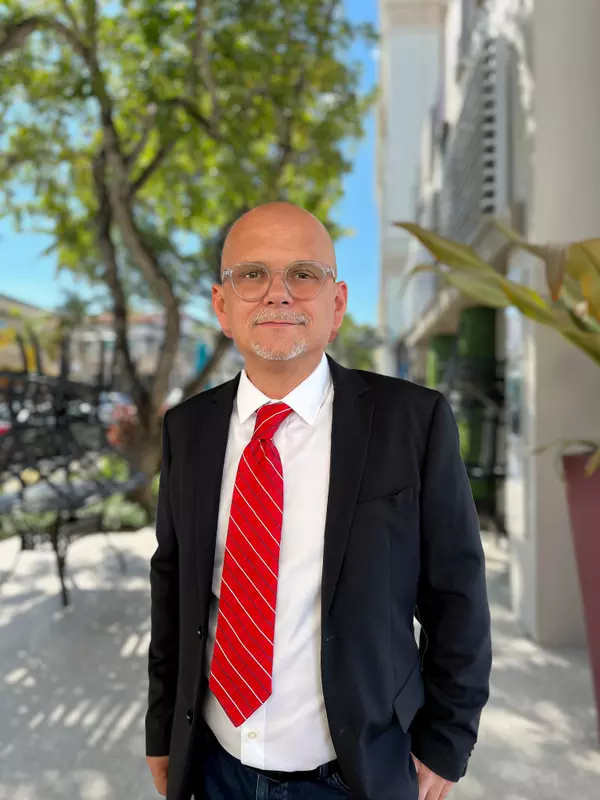eXp Realty embraces digital twin tech to transform workflows
For eXp Realty, artificial intelligence (AI) is not a side project — it’s a company-wide mandate.
Following a session at HousingWire’s AI Summit where eXp chief technology officer Sumanth Kamath talked about how the company was utilizing digital twin technology, HousingWire sat down with eXp CEO Leo Pareja and International Director Felix Bravo to find out more about how the brokerage is building digital twins into everyday workflows — allowing executives, staff and agents to work faster and smarter across global time zones.
“I was talking to someone who was interested in joining the leadership team, and they said, ‘Hey, I would love to lead kind of AI implementations,'” said Pareja. “I didn’t get that. They said they thought it’s like evangelizing. I said, ‘No, it’s everyone’s job. That is literally everyone’s job requirement.
“We fully believe that we are going to be AI native. And so, whether you’re a frontline person or a senior person, were building stuff that they all wanted and can put to use. It’s all here. It’s not something scary. I think the folks who will embrace it will outperform the ones who don’t.”
Bravo said eXp founder Glenn Sanford built one of the company’s first twins — setting off a wave of experimentation.
“We didn’t know what was going to come of it,” he said. “We didn’t know exactly what we were building. We just knew that there was really great new technology out there that made an everyday user or non-technical user capable of accomplishing really incredible things. And so we started playing with it, and from that came the digital twin that Glenn made, and then I decided to make one.”
Removing bottlenecks
Pareja has also built his own digital twin, trained on decades of speeches and articles.
“There’s a GPT of me that the team uses quite a bit, and so that one was really loaded with all of the keynotes I’ve ever done, anything I’ve ever written, and so it has a really, really good grasp on my voice,” Pareja said. “So, the marketing team can write something and then say, ‘Make it sound like Leo.’
“All of us are guilty in our daily workflow of being our own bottleneck. So if you have team members, direct reports, someone you report to — who can have a quick digital conversation with someone on the team and give a quick assessment — that’s a win.”
AI at work
Pareja pointed to Fyxer AI — an email companion that drafts responses in an agent’s tone — and recounted a recent use story from Houston-based agent Brandon Snyder.
“Brandon received a message on a Saturday while he was doing family stuff, self-described nerdy stuff, if he tells you the story,” said Pareja. “He got an email, and it went something like, ‘I asked ChatGPT who the most investor-friendly Realtor in Houston was and it gave me your name.’”
Pareja said the Fyxer AI digital twin email responder drafted an email and went into Synder’s Google Meet to identify available appointments for that week.
“Brandon opened up his phone while he was doing family stuff, said, ‘Oh, this is pretty good,’ and responded right away just like that,” he said. “This happened on a Saturday, and I want to say two to four weeks later, they were approved for a single-family home.”
Global scale, guardrails
For Bravo, the power of digital twins is in empowering staff worldwide — especially in regions where time zones complicate communication.
“I was able to create the digital twin on top of that, to superpower those teams, where it’s not just our regional leaders who have access to me at certain times a day,” he said. “Now it’s all the staff, no matter if you’re an executive, if you’re an onboarding analyst, whatever level you are within the organization, you have access to a thought partner of mine.”
But he stressed that guardrails remain in place.
“The twin doesn’t change the decision rates,” he said. “Everyone within any business or organization has different levels of decision-making capabilities. Every leader has defined guardrails and the twin doesn’t overstep that. A human leader is jumping in for context beyond data or policy.
“The twin can help them think through things, but it still requires that human connection and touch for us to make that decision together.”
Back to the future of digital twins
Digital twin technology was originated by Dr. Michael Grieves back in 2002. In an interview with HousingWire, Grieves, the chief scientist of advanced manufacturing and executive vice president of operations at the Florida Institute of Technology, said he was struck by the excitement eXp executives have expressed about the technology.
“Obviously, I’m quite pleased. I am surprised because, quite frankly, I kind of put this together for the idea of product life cycle management as we were moving from a functional, centric view of the world, where everybody had their own data modeling,” he explained. “So, seeing this model come to come to life, if you will, it’s pretty cool, I have to say.”
Grieves sees a number of applications for digital twins in real estate, including having a digital twin of a house, which could give homeowners direct feedback.
“If I had a digital twin of my house, I would love to know where everything is. The ability of offering you a digital twin when you bought a house would be a huge deal. It could really drop cost of renovations.”
Grieves also sees potential to reshape the economics of property ownership and construction.
“We are seeing digital twins at a larger scale for smart building, smart city stuff,” he said. “But I think the real estate market could absolutely benefit from having digital twins, even of residential housing. There’s predictive maintenance and telling people, ‘I think you need a new furnace. Here is the digital twin of your house, and it’s showing the fact that the furnace is going to fail next winter.’ I mean, that would be a huge opportunity.
“If you could basically move into a Metaverse and see a bunch of houses without ever having to drive around as at least a first pass, that would be a big seller.”
Bravo and Pareja said they’d be eager to communicate with Grieves about his career work and nuances of digital twin tech.
“Maybe we can even have our digital twins have a chat,” said Bravo. “It’s awesome to hear (Grieves is) happy with what we’re doing. It’s all happened really fast. We’ve been sort of on the forefront of a lot of it, and people are inventing new things all the time, whether it’s ChatGPT or whatever other AI tool. That’s what I think our biggest strength has been, getting really creative with it from the start and never shying away.”
Categories
Recent Posts










GET MORE INFORMATION

Stevan Stanisic
Real Estate Advisor | License ID: SL3518131
Real Estate Advisor License ID: SL3518131
